/Dialogue | Reading Time: 14 minutes
Tehranto
A Stories of Home and Belonging from Toronto’s Iranian Diaspora
Nima Naghibi & Amin Moghadam | June, 2025
ISSN 2818-9434
A.K.:To begin, we’d like to ask about the framing of your project. Your project centers on the emotional landscape of the Iranian community in Toronto, particularly emotional aspects of homemaking — as well as the emotions tied to returning to Iran. What inspired you to adopt an emotional lens for this study?
N & M: First, we should mention that ours is an interdisciplinary project. As co-PIs of this project, we are trained in the disciplines of English Studies and Human Geography, and our methodologies are thus informed by our respective training in the Humanities and the Social Sciences. We are excited about our collaboration because our disciplinary backgrounds afford us the opportunity to engage with questions of home and belonging using different scholarly approaches. For example, migration studies scholarship tends to tackle the experience of migration and homemaking from an economic angle assessing factors such as migrants’ integration into the host country’s labour market and the mobilization of predefined categorical parameters (such as race, religion, and ethnicity) in order to elucidate patterns of social interaction, integration, or marginalization within distinct socio-professional contexts.
Our work engages with this body of scholarship, while placing the study of emotions and affect at the core of our analysis. Drawing on theories of affect and emotion by theorists such as Sara Ahmed, and nostalgia by theorists such as Svetlana Boym we recognize what Ahmed describes as “the sociality of emotion” (Ahmed 2004: 8). As Ahmed and other scholars of affect have observed, emotions are relational; they circulate between bodies in ways that both elicit attachments to objects, places, people, and also encourage a turning away from, or rejection of, objects, places, people. Our project uses emotion as a way into understanding the complexities, tensions, and diverse forms of belonging in the migration experience. Our project, “Tehranto: Stories of Home and Belonging from Toronto’s Iranian Diaspora,” offers an account and analysis of the emotions of Iranian migrants associated with their experience of migration, and their sense of belonging and experiences of “homemaking” and feeling “at home” in Toronto.
These places mediate the sense of belonging and not belonging through immigrants’ neighbourhoods and social spaces, as well as their homes as material domestic spaces.
A.K.:How do you engage with the diverse experiences of migrants? Tehranto isn’t the oldest Iranian community, but it’s one of the largest and made up of different generations of migrants.
N & M: We recognize that many migrant trajectories are complex and not simply linear; many have lived in transit cities on their way to Toronto, in for example, Turkey or European countries. Thus, diasporic Iranians’ current living spaces are shaped by their emotional experiences and ideas of the places they lived in the past, including, but not limited to, their country of origin, Iran. We draw attention to this multiplicity of places in diasporic Iranian migration trajectories as a way of recognizing a range of emotions as part of the experience of migration and homemaking. Through an engagement with the personal narratives of diasporic Iranians, we consider the ways in which diverse and successive waves of “Tehrantonians” situate themselves in relation to the idea of a home in Iran and in the diaspora, and examine how Tehranto has become a vibrant site of diasporic belonging and affective and political connections.
Understanding these different waves of migration through the theoretical lens of affect theory and emotional geography allows us to recognize the internal diversity of Tehranto by engaging with diasporic Iranians’ personal narratives of home, migration, and diasporic life. Ahmed writes that, “[m]igration is also a matter of generational acts of story-telling about prior histories of movement and dislocation. The telling of stories is bound up with – touched by – the forming of new communities” (2000: 90). Indeed, storytelling is at the heart of our project. We believe in making space for diasporic Iranians from first generation to second generation immigrants, from those who arrived in the immediate aftermath of the 1979 revolution to those who continue to arrive today, to tell their own stories, and to share their migration trajectories through the sharing of their emotions.
A.K.:Please tell us more about your research methods? You’ve organized reading sessions with your interlocutors—what themes or texts do these sessions focus on? How do you explore nostalgia for Iran and its cultural or material manifestations among migrants?
N & M: For this project, we adopt a mixed-methods approach, drawing on our training in the Humanities and Social Sciences to combine textual analysis, qualitative interviews, mapping technologies, and digital humanities tools. Our aim is to invite Tehrantonians to share stories about Tehranto and Iran, and their memories of migration and home, through voice recordings, mapping, and photography using their mobile devices.
We are currently in the first phase of the project. As you noted, we have organized three public reading sessions with members of the Iranian community in Toronto, following a call for short contributions. The prompts for these calls were intentionally simple and accessible. We asked participants to describe their “First Night in Tehranto.” We issue a call to emerging and established authors to share their memories in the form of short life narratives about their first night in Toronto or their early immigrant years in the city. We did not intervene in their texts, and the writers presented their works in front of a diverse audience of both Iranians and non-Iranians. The first event was a tremendous success, and generated a lively discussion with the audience. We were strongly encouraged by audience members and participants to organize more sessions—which we did. We have since organized three sessions and are organizing a fourth, to be held in the Fall of 2025.
We would like to emphasize that we are deeply engaged with our community. Our project is grounded in a de-centered approach that prioritizes the voices and perspectives of diasporic Iranians. We are committed to hearing their stories and placing their narratives at the centre of our work on Toronto’s Iranian community instead of conducting research about them through inaccessible forms of academic writing. We care more about what brings us together than what sets us apart, and we believe that sharing our stories is a powerful first step toward that goal. As an example, we always share our own personal stories of migration with participants to create a shared and reciprocal space of dialogue where we can be vulnerable and talk about our own experiences as immigrants. As such, knowledge mobilization is not just a performative academic gesture for us but also an ethical commitment that guides our work.
A.K.: And, how do you investigate their practices of homemaking in the context of settlement in Toronto?
N & M: In addition to the interviews and public sessions that we organized, we are also building an extensive dataset on Iranian-owned businesses and public places of socialization in Toronto since the 1980s. Drawing on existing sources from libraries and personal archives, we aim to trace the urban evolution of the Iranian community in Toronto. These places frequently surface in both our interviews and participants’ writings. We are currently designing an interactive online platform that will bring together the firsthand stories and archival materials we are collecting—both from interviews and community writing.
In the coming months, we will also be organizing urban and domestic tours with groups of Iranian residents in different neighbourhoods across the city. Drawing on research in emotional geography, these tours will help us construct “home-city biographies” to explore how migration histories, domestic lives, and urban spaces intersect, converge, and diverge in layered ways. As Blunt, Ebbensgaard, and Sheringham (2021) suggest, we will examine how residents “remember, experience, imagine, and narrate the urban and domestic ‘living of time’ in relation to urban ‘roots’ and ‘routes.’” These methods will allow us to generate emotional maps based on the home-city biographies of our participants.
A.K.:In mapping homemaking practices, how do you address the unequal material conditions that influence different groups’ homemaking practices?
N & M: An important material manifestation of migration and diasporic trajectories—as well as the subjectivities, emotions, and tensions associated with belonging—is housing and homemaking. This theme has been critically examined across migration studies, diaspora studies, and life writing. In our research, we approach the notion of “home” and the process of homemaking both as an affective experience and as a material pursuit involving the search for housing—as architectural form, place of residence, and social anchor. We draw on a rich interdisciplinary body of work in cultural geography, anthropology, and cultural studies that explores the intersection of housing and homemaking, while also engaging in dialogue with architecture and design studies. Urban studies on migrant communities offer rich insights into how migrants’ housing practices are shaped not only by structural constraints—such as economic precarity, legal status, and housing market conditions—but also by emotional attachments, memories, and aesthetic sensibilities. (see Boccagni 2014, 2022, 2023)
The house, as an architectural and social construct, sits at the interface of interior and exterior space, domesticity and public life, rootedness and displacement. In her study of migrant houses in Zavjol (Northern Macedonia) and Melbourne (Australia), Mirjana Lozanovska (2019) explores how houses function as “transcultural constructs”—mediating community ties, emotional distances, and spatial negotiations during migration. She argues that when migrants inhabit, adapt, purchase, or construct houses, key questions emerge around access to value, the production of meaning, and the circulation of aesthetic and cultural norms.
Building on this scholarship, our project traces the residential trajectories of Iranian immigrants in Toronto through a transnational lens—considering not only their current experiences, but also their prior housing histories in the country of origin. We are particularly interested in how housing decisions are shaped by a mix of economic, legal, emotional, and aesthetic considerations—both individually and collectively, within the broader Iranian diaspora. We also pay attention to the symbolic and material dimensions of home: how particular aesthetic preferences travel and take shape across borders; which types of architecture are favoured (both interior and exterior); and how domestic spaces relate to the surrounding urban environment. These housing choices are never purely functional—they reflect migrants’ aspirations, strategies, class positions, and desires for stability or mobility. They also embody deeply felt emotions and narratives of displacement, hope, and belonging.
A.K.:In Iran, homeownership signals household stability and serves as a key form of investment and long-term financial security. Do you see similar patterns in Toronto?
N & M: This is the focus of a parallel research project by Amin on the homeownership experiences of Iranian immigrants in Toronto. His study investigates how homeownership operates as both a financial and affective strategy, shaped by housing policy frameworks and diaspora politics. He pays close attention to the role of transnational practices, the emotional geographies of ownership, and the intermediaries—such as real estate agents—who act as migration brokers in facilitating home purchases. His project highlights how financialization and emotional investment are intertwined in migrants’ experiences of buying and owning a home in Canada’s large urban centres. While these two projects are distinct, they are in constant dialogue and mutually enriching. Together, they aim to unpack the complex interplay between structural conditions and intimate, subjective experiences of home—foregrounding the ways in which homemaking becomes a site of negotiation, aspiration, and meaning-making in the migratory journey.
A.K.:It seems that many migrants navigate life between Toronto and Iran, alternating seasonally or at various points in their life course. Are the categories of staying and returning truly exclusive in the case of Torontonians? Is there any available data on the number of Iranian Canadians who currently reside outside of Canada?
N & M: Our research is grounded in the urban experiences of Iranians in Toronto, while also taking into account their past trajectories, periods of transit, and potential desires or plans to return to Iran. As such, the transnational dimension is central to our work, though it is approached through migrants’ narratives about their everyday lives in Toronto. To our knowledge, there is no available data on the number of Iranian-Canadians who currently reside outside of Canada. This is not the focus of our project, but it certainly raises important questions that would merit a dedicated research initiative—one that could explore not only return migration to Iran but also the growing presence of Iranian-Canadians living in other parts of the world, particularly in the Arab states of the Persian Gulf.
A.K.:Let’s talk more about how Tehranto interacts with broader Canadian society in your research. Migration studies highlight how maintaining ties within one’s own community while integrating into the wider society can be a complex process. How do members of the Iranian community navigate this dynamic?
N & M: The role of the Iranian community in shaping migrants’ trajectories is highly variable and depends on several factors, including the timing and conditions of arrival in Canada, as well as intersections of gender, age, class, cultural and social capital, and sexual identity. For some, the community plays a crucial role in facilitating settlement and integration; for others, it may represent a form of social enclosure or constraint. These ambivalent dynamics are clearly reflected in the interviews we are currently conducting.
Moreover, the Iranian community in Toronto is far from homogeneous. It is marked by diverse practices, generational divides, and varying modes of identification. The urban geography of Toronto also helps us map this diversity; for instance, between downtown Toronto and the northern neighborhoods commonly recognized as Iranian neighbourhoods, as well as the growing Iranian presence in midtown Toronto and even in suburban areas to the east and west. The spread of Iranian businesses across these areas points to emerging patterns of community formation and socio-spatial reconfiguration. This is also an opportunity to clarify what we mean by Tehranto. While the term certainly includes neighbourhoods with visible concentrations of Iranian businesses and services, it also encompasses places in other areas such as in downtown Toronto that serve as important spaces of socialization and community-making for certain segments of the Iranian population. Rather than seeing the community as a fixed entity, our project explores Tehranto as a dynamic and evolving constellation of places, relations, and practices that shape the lived experiences of Iranian migrants across different parts of the city.
A.K.:Do you study the discourses of becoming Canadian among Iranian community? A segment of younger Iranian migrants appears to have limited engagement with the Iranian community, often viewing distance from it as a necessary step toward “success” and “becoming Canadian.” Does your research examine this phenomenon?
N & M: Our research does engage with this phenomenon, but we approach it through an intersectional and subjectivity-centered lens. Age or time of arrival in Canada is certainly a factor, but it intersects with many others—including gender, sexual identity, social and cultural capital, class background, and past experiences in Iran and along one’s migration trajectory.
The ways individuals relate to the Iranian community in Toronto are shaped by these overlapping dimensions. For some younger migrants, the Iranian community provides crucial networks of support and a sense of continuity that facilitates settlement and integration. For others, especially those who may not see themselves reflected in dominant norms within the community, distancing from it can be part of a strategy to access alternative forms of empowerment and belonging. For example, LGBTQI Iranian migrants may find the city’s queer communities more affirming and central to their sense of self and safety than traditional Iranian networks. Still, these affiliations are not mutually exclusive—individuals often move between multiple spaces of identification and belonging.
Our project is grounded in the narratives and subjectivities of individuals. Rather than generalizing about “the Iranian community” or “the Canadian experience,” we focus on how migrants articulate their own sense of identity, home, and belonging in complex and often contradictory ways. Exploring these lived experiences allows us to better understand how discourses of “becoming Canadian” are internalized, negotiated, or resisted—not as fixed outcomes, but as evolving and situated processes.
A.K.:Many Toronto neighbourhoods are shaped by immigrant communities, with cultural symbols and businesses marking diasporic presence—Tehranto among them. When did Tehranto begin to form, does commercial activity lead to residential settlement, or does community presence spur the growth of ethnic businesses?
N & M: The development of the so-called ethnic commercial zones like Tehranto is often shaped by a combination of economic logics and community dynamics. In many cases, the availability and affordability of commercial real estate play a crucial role in determining where the first businesses are established. This is coupled with the economic capital that migrants are able to mobilize upon arrival. Once a few businesses are in place, an effect of emulation tends to emerge: additional Iranian-owned establishments are drawn to the area, creating a clustering effect that reinforces the visibility and functionality of the space.
Over time, complementary services begin to spatially co-locate—legal offices offering immigration support, currency exchange businesses, Iranian supermarkets, beauty salons, and cafés—reflecting the everyday needs and desires of the community. This spatial concentration creates a kind of ecosystem, where services feed into one another and help sustain community life. Of course, this is not unique to the Iranian community; it has been widely studied in urban and migration literature focused on ethnic neighborhoods and commercial corridors.
Our project builds on scholarship that emphasizes the relational nature of space—drawing in particular on the pioneering work of Doreen Massey. From this perspective, migrant neighbourhoods should not be viewed as closed ethnic enclaves, but rather as dynamic spaces that are constantly in relation with the broader urban environment. These neighbourhoods maintain ties with other parts of the city and other communities. And due to their cultural visibility, they play a dual role: they serve as important hubs for members of the diaspora while also shaping how the broader population encounters and interprets migrant presence in Toronto.
As for the formation of Tehranto, it did not emerge at a single moment in time. Its character has evolved through successive waves of Iranian migration, particularly since the 1980s, shaped by political events in Iran and shifts in Canadian immigration policy. The consolidation of Iranian businesses in areas like North York, as well as the emergence of newer Iranian-owned establishments in midtown and suburban areas, reflects broader patterns of socio-economic mobility and urban change. Rather than a fixed or bounded space, Tehranto is best understood as a layered and evolving urban formation—anchored in the material presence of Iranian institutions and businesses, but shaped equally by the lived experiences, memories, and aspirations of the people who move through it.
In the interviews we are currently conducting with Iranian business owners and other members of the Iranian diaspora, we always ask about the history of the earliest Iranian businesses in Toronto—for instance, what was the first Iranian pastry shop? Who opened the first supermarket? While responses sometimes vary, these questions allow us to explore the urban memory of the city through the lens of individual and collective experiences.
At the same time, as mentioned earlier, we are building an expanded database that maps the locations of Iranian businesses in Toronto—their points of urban anchoring, their trajectories, and their evolution over time. Whenever possible, we meet with current or former business owners who share their personal stories along with accounts of how their establishments came into being. These narratives help us understand how such businesses have contributed—and in many cases continue to contribute—to the shaping and continuity of Iranian presence in the city.
A.K.:Thank you for accepting our invitation and sharing your research questions and insights on the Iranian diaspora in Toronto with us. We look forward to the completion of your work and to reading your published research in the years to come.
References
Ahmed, Sara. Strange Encounters: Embodied Others in Post-Coloniality. Routledge, 2000: 90.
Ahmed, Sara. The Cultural Politics of Emotion. Routledge, 2004: 8.
Blunt, Alison, Casper Laing Ebbensgaard, and Olivia Sheringham. “The ‘Living of Time’: Entangled Temporalities of Home and the City.” Transactions of the Institute of British Geographers 46, no. 1 (2021): 149–62. https://doi.org/10.1111/tran.12405.
Boccagni, Paolo. “What’s in a (Migrant) House? Changing Domestic Spaces, the Negotiation of Belonging and Home-Making in Ecuadorian Migration.” Housing, Theory and Society 31, no. 3 (2014): 3. https://doi.org/10.1080/14036096.2013.867280.
Boccagni, Paolo. “Homing: A Category for Research on Space Appropriation and ‘Home-Oriented’ Mobilities.” Mobilities 17, no. 4 (2022): 585–601. https://doi.org/10.1080/17450101.2022.2046977.
Boccagni, Paolo, and Pierrette Hondagneu-Sotelo. “Integration and the Struggle to Turn Space into ‘Our’ Place: Homemaking as a Way beyond the Stalemate of Assimilationism vs Transnationalism.” International Migration 61, no. 1 (2023): 154–67. https://doi.org/10.1111/imig.12846.
Lozanovska, Mirjana. Migrant Housing: Architecture, Dwelling, Migration. Routledge Research in Architecture. Routledge, 2019.

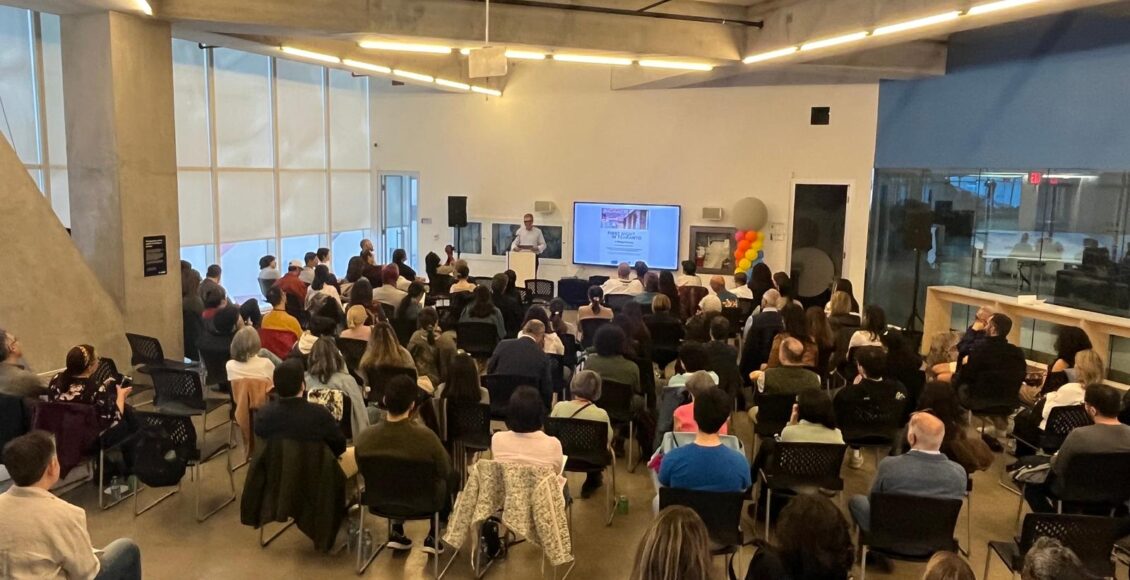
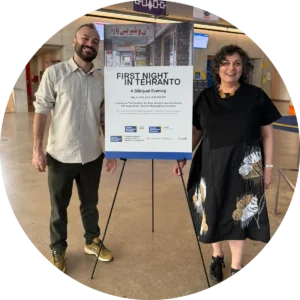 Nima Naghibi, a professor of English at Toronto Metropolitan University, and Amin Moghadam, research lead at The Canada Excellence Research Chair in Migration and Integration (CERC Migration) at the same university have designed a collaborative research project to explore the complexities and tensions of belonging that have shaped Iranian diasporic life and “Tehranto” as a vibrant Iranian hub in a multicultural urban landscape. This interview, due to the university’s summer break, was conducted in writing.
Nima Naghibi, a professor of English at Toronto Metropolitan University, and Amin Moghadam, research lead at The Canada Excellence Research Chair in Migration and Integration (CERC Migration) at the same university have designed a collaborative research project to explore the complexities and tensions of belonging that have shaped Iranian diasporic life and “Tehranto” as a vibrant Iranian hub in a multicultural urban landscape. This interview, due to the university’s summer break, was conducted in writing.

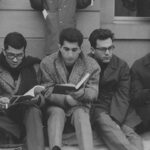

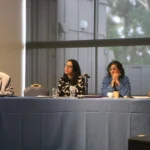
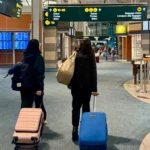
Comments are closed.